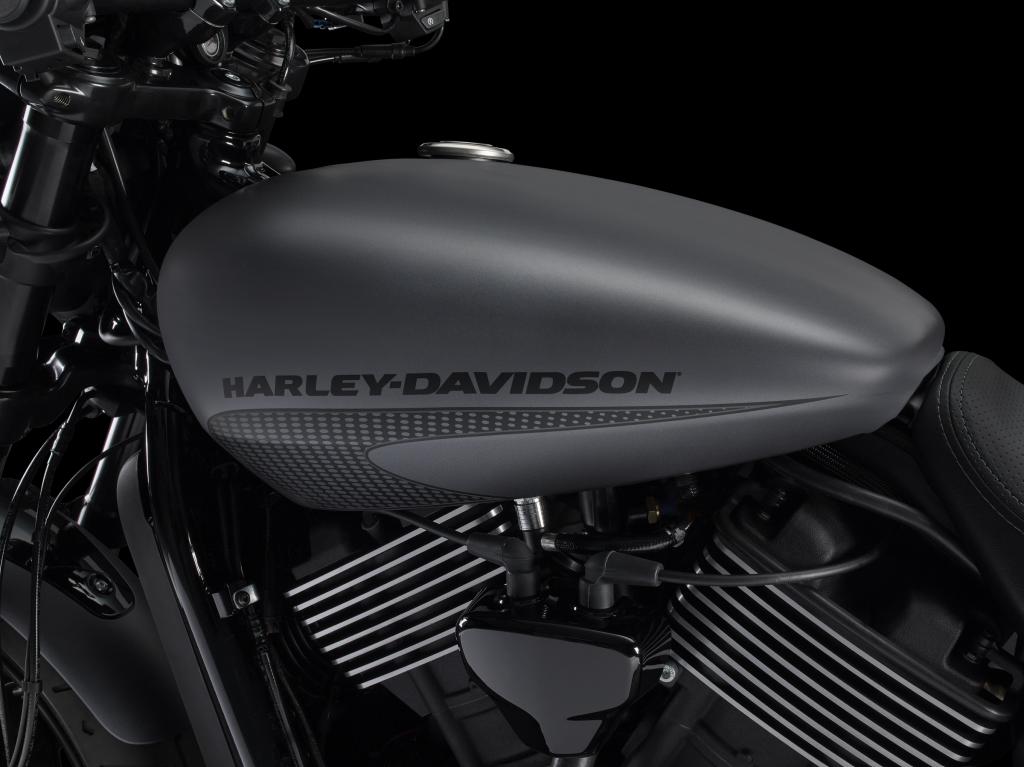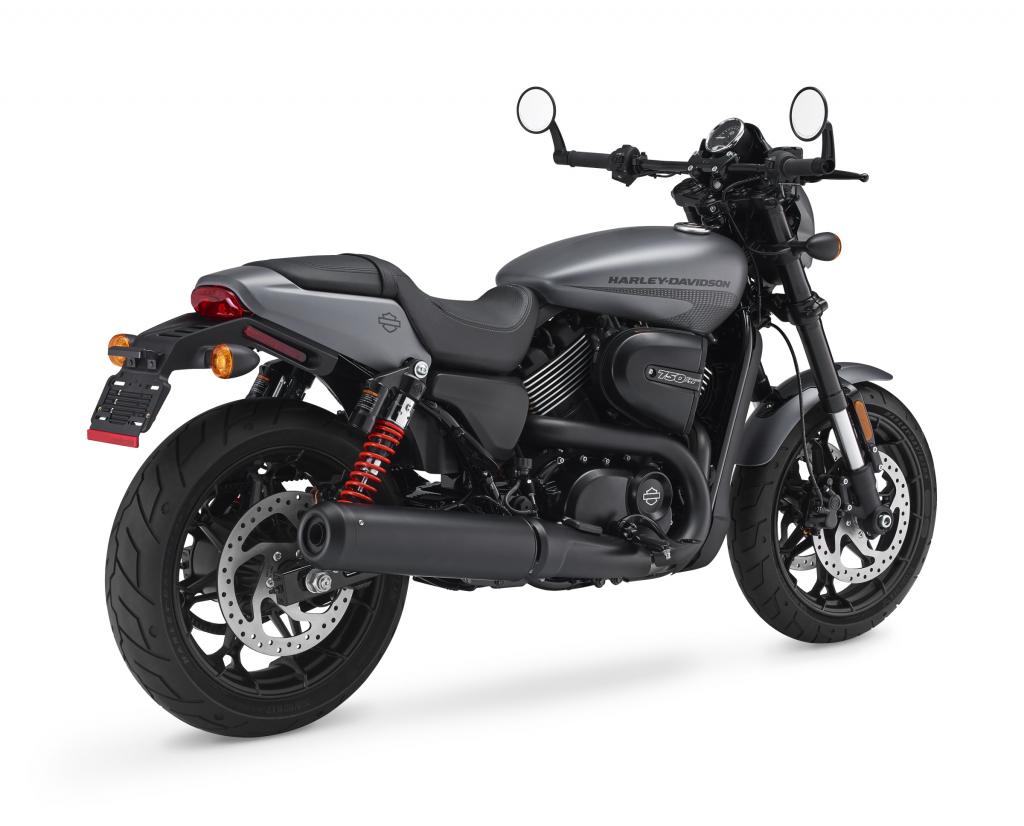Harley-Davidson made a lot of improvements to its Street 750 to create the Street Rod. So why is it one of the most awkward-feeling motorcycles I’ve ridden?
Most people were underwhelmed by the Harley-Davidson Street 750, Harley’s new liquid-cooled “world” motorcycle. Performance was nothing amazing, which is not that surprising for Harley-Davidson, but what was surprising was the general quality of the fit and finish and the looks.
In introducing the 2017 Street Rod, Harley was unusually responsive to criticism. This new model addresses the Street 750’s shortcomings with a range of improvements: steel-braided brake lines and dual discs up front, far better fit and finish, a little more power — even little things like improved, bar-end mirrors.
So this is a Harley I should like, right? One that can go and lean, at least a little. I took the one we currently have on loan at RevZilla for a short ride this past week while I was in Philadelphia, and I’m sorry to say I can’t get on board the Street Rod train.
I just don’t get this motorcycle.
Oh, I get it in terms of positioning and purpose. I understand this is a model that’s more about selling Harleys to people in India than in Indiana. The part I don’t get is who this bike was designed for, physically, not geographically. This is one of the most awkward motorcycles I’ve ridden in years.

2017 Harley-Davidson Street Rod.
There are plenty of uncomfortable riding positions in the motorcycle world, from race replicas that fold you up in the name of speed to feet-forward cruisers that stretch you out in the name of looking laid-back and feeling comfortable for a low-speed, 10-mile ride. The Street Rod takes uncomfortable in a new direction, however.
The foot pegs are high, improving cornering clearance over most Harleys, but they are not tucked back like a sport bike’s foot pegs. The seat is relatively low. The combination, for any rider with longer legs, is a situation where knees are higher than hips. Then to throw in another wrinkle, the gas tank is fairly wide between the knees. My knees were hugging the tank, which is not usually a bad thing. But it is when the tank is not made to be hugged. Instead of cutouts for my knees to slot into, the tank has relatively sharp edges. I can’t grip it, like I would on a sport bike, and I can’t avoid it, as I would on something like a Harley-Davidson Sportster.

The fuel tank on the 2017 Harley-Davidson Street Rod is oddly shaped. It is low at the front, exposing part of the steering stem, and is wide at the rear, spreading the rider’s knees.
What’s odd is how unnecessary this seems. I am usually oblivious to small styling issues that other people obsess over. Usually, I’m focused on function. But even I noticed something that others have pointed out: The shape of the tank is odd. It sits low in the front, exposing part of the steering stem. Harley could have made the tank bigger by making it taller in the front and narrower in the back and simultaneously improved both form and function.
Riding the Street Rod around Philadelphia’s streets and highways, I found the improved brakes to be just fine and power was adequate. But the suspension felt harshly stiff. As a result, I felt very little confidence in pushing the bike beyond a very modest pace. Every sharp-edged bump sent a jolt to my body, so I didn’t really want to find out how the bike would react if I hit any kind of undulation while leaned over mid-turn. In general, potential riders in Asian markets are smaller than in the United States, so I can’t figure out why Harley tuned the bike with such a stiff suspension.
The upper half of my body finds the Street Rod awkward, too. The handlebar is wide, splaying me out and increasing the length of my reach to the grips.
I was thinking maybe the cramped ergonomics could be explained by the fact that the Street Rod is built for others, not those of us in the United States. True, it’s a “world market” bike. But where in the world do you find riders who are short of inseam, long in the sleeve length and need an extra-stiff suspension because they weigh 250-plus pounds and ride on super-smooth roads? I know of no place like that on this planet.

2017 Harley-Davidson Street Rod.
Add to this the fact that the Street Rod starts at $8,699, which puts it in competition with some sweet bikes that don’t cost as much, weigh less and make more power (Yamaha FZ-07, Suzuki SV650, Kawasaki Z650).
The Street Rod is better than the Street 750, true. But still, I just don’t get it.

We’ve been scratching our collective HD-fan heads ever since these Street things were unveiled. Mike, my co-Harley-loving buddy got a chance to ride it (with ergo’s that had knees hitting elbows) and reported as you did. It is clearly built to a cost–and it shows. This reminds me of the Sears/Kmart merger, or the Daimler/Chrysler, which in both cases, benefited neither. And, it can’t hold a candle to the Indians in Flat Track–even with the knowledge that a race bike doesn’t have much to do with a street legal machine. A big mistake by the Milwaukee Mother ship? Wouldn’t surprise me–they’ve made plenty in the past, but this one stinks of a simple lack of knowledge about company priorities. Like, maybe, a CEO that made batteries before building Harleys.
I will give Harley-Davidson this much: The Street Rod does address a lot of the problems with the original Street models, such as the ugly exposed wiring and other fit and finish issues, the brakes, etc. But it’s like they forgot the step of having a test rider try out a prototype before they put it into production. Awkward is the word that came to mind every minute I was riding it. It’s been quite a few years since I was on a motorcycle and wanted to get off it more than I wanted to get off this one after just a few miles.
I don’t see why some people are excited about this bike. It just looks generic, not good looking like most Harleys and it still has the Harley premium price.